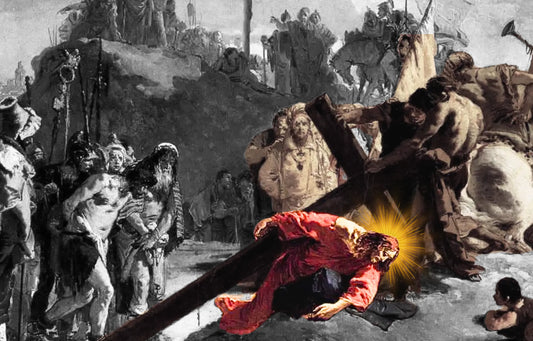The Sator Square is a five‑word Latin palindrome arranged in a 5×5 grid (“SATOR AREPO TENET OPERA ROTAS”), readable forwards, backwards, vertically, and horizontally. Scholars disagree on its meaning: common translations include “The sower Arepo holds the wheels with care,” but “Arepo” has no clear Latin root. Throughout history it was used as a magical and protective charm, in medieval Europe as a cure for disease or ward against fires.
Origins of the Sator Square
Earliest Discoveries
The earliest known Sator Square was uncovered in Pompeii, pre 62 CE, etched onto a plaster wall in a private residence. Archaeologists have since found similar inscriptions across Roman sites in Italy, France, and Germany, often on stone, ceramic, and fresco surfaces.
These artifacts suggest that the square was not a rare curiosity but part of a broader cultural practice, likely accessible to literate Romans. Its repeated appearance in domestic and public spaces indicates both symbolic and aesthetic significance, hinting at the importance of wordplay and visual symmetry in Roman literacy culture.
Possible Roman Uses
Scholars propose the Sator Square functioned in multiple ways. Some evidence points to religious or magical purposes, serving as protective charms against misfortune, fire, or disease (Encyclopaedia Romana). Its perfect palindrome, readable in multiple directions, demonstrates a fascination with linguistic symmetry and clever design, valued in Roman education and rhetoric.
Word squares like this also reflect Roman numeracy and literary culture, linking letters, numbers, and meaning. This combination of artistry, literacy, and practical application shows the Sator Square as more than a simple puzzle, embedding cultural, spiritual, and cognitive significance into a compact five-by-five grid.
Linguistic Analysis and Translation
Structure of the Square
The Sator Square consists of five Latin words arranged in a 5×5 grid: SATOR AREPO TENET OPERA ROTAS. Its remarkable feature is that it reads identically forwards, backwards, vertically, and horizontally. This structural symmetry is rare in ancient inscriptions and reflects a deliberate interest in linguistic precision. The repetition of letters and mirrored positioning demonstrates a sophisticated understanding of wordplay and visual patterning in Roman literacy. Such complexity suggests it was intended for contemplation or memorization rather than casual reading.
Common Translations
A frequent translation of the square is, “The sower Arepo holds the wheels with care.” This interpretation hinges on the mysterious word Arepo, which lacks clear Latin roots and may be a proper name or invented term. Scholars remain divided: some treat it as a cryptic reference to a sower or farmer, while others suggest allegorical or mystical meanings. Variations exist in medieval copies, reflecting interpretive flexibility, and pointing to the text’s use beyond mere decoration.
Hidden Codes and Theories
Beyond literal meaning, the Sator Square has inspired theories of early Christian numerology and gematria. Some researchers propose its letters encode Pater Noster (Our Father) or other prayers when rearranged. Connections to Jewish letter symbolism and Latin-Christian wordplay further indicate that the square may have served dual functions: linguistic amusement and spiritual or protective significance. Its palindromic nature would have reinforced the sense of perfection, completeness, and divine order.
The Sator Square in Christian Context
Early Christian Adoption
The Sator Square appears in several early Christian catacombs and medieval manuscripts, indicating that Christians repurposed it as a symbolic tool. Inscriptions from the 4th and 5th centuries CE suggest it functioned as a Christogram, with letters sometimes rearranged to reveal “Pater Noster” within the square.
Monks and clergy valued it as a protective charm, inscribed on walls or objects to guard against spiritual or physical harm. Its adaptability allowed early Christians to integrate a Roman cultural artifact into emerging Christian symbolism without overtly challenging pagan norms.
Mystical and Magical Uses
Throughout medieval Europe, the Sator Square was employed as a talisman for cures, protection from fire, and warding off disease. Clerics often interpreted its palindromic structure as a reflection of divine order, believing the square’s perfect symmetry could channel spiritual power. Some manuscripts instructed its inscription in household or ecclesiastical spaces, demonstrating that literacy, theology, and practical protection intersected in its use.
Comparative Religious Perspectives
Similar palindromic word puzzles appear in Jewish mystical texts and occasionally in early Islamic inscriptions, highlighting a shared fascination with symmetry and coded meaning. Palindromes were valued as a reflection of cosmic balance and spiritual completeness, reinforcing a sense of order and divine presence across multiple traditions. The Sator Square exemplifies this broader cultural interest, bridging linguistic cleverness with spiritual symbolism.
Archaeological and Historical Significance
Geographic Spread
Archaeological finds show the Sator Square across Italy, France, Germany, and the UK, appearing on walls, stones, ceramics, and manuscripts. Placement varies, with some inscribed in private homes, others in churches and tombs, reflecting evolving cultural and religious significance. Style differences, such as letter spacing and decorative flourishes, indicate local adaptations over several centuries.
Dating Challenges
Dating the Sator Square presents challenges. The Pompeii example predates 62 CE, but medieval European examples appear as late as the 13th century, raising questions about transmission. Researchers rely on carbon dating, paleographic analysis of inscriptions, and historical records to establish timelines, yet gaps remain. Variations in style, location, and medium complicate definitive chronological conclusions, underscoring its enduring and adaptive nature.
Modern Interpretations and Popular Culture
Academic Debates Today
Scholars continue to debate whether the Sator Square should be read primarily as a linguistic puzzle or as a mystical Christian symbol. Linguists emphasize its perfect palindromic structure and letter symmetry, reflecting Roman literary sophistication.
Theologians and historians highlight potential cryptographic functions, such as hidden prayers or Pater Noster encoding, suggesting early Christians adapted it for spiritual purposes. Contemporary studies use it to explore Roman literacy, early Christian cryptography, and the interplay between popular culture and sacred symbolism.
Influence on Literature, Games, and Media
The Sator Square appears in multiple modern contexts:
- Novels: Authors use it to symbolize hidden knowledge, fate, or secret codes.
- Films: Occasionally featured as a mysterious or mystical motif.
- Games and puzzles: Palindromic structure inspires brain teasers and cryptographic challenges.
- Symbolic storytelling: Writers and designers exploit its symmetry to convey order, mystery, and intellectual depth.
As Nigel Guy Wilson notes:
The Sator Square is a remarkable example of the Roman mind at play, combining wit, devotion, and the human desire for order into a small but enduring form.
This observation underscores why the square continues to captivate both scholars and enthusiasts, bridging ancient linguistic skill with modern fascination.
Ethical and Theological Reflections
Symbolism for Contemporary Christians
For modern Christians, the Sator Square illustrates how early believers engaged with culture, transforming Roman symbols into expressions of faith. It teaches lessons on the interplay of language, mystery, and spirituality, emphasizing creativity in devotion. The square’s adaptability encourages reflection on how symbols can carry layered meaning across time, serving both practical and contemplative purposes.
Broader Human Fascination with Palindromes
Palindromes, including the Sator Square, captivate because they reflect cognitive patterns and symmetry, stimulating curiosity and meaning-making. Humans are drawn to repetition, balance, and hidden structures, making palindromes tools for both intellectual challenge and spiritual reflection. The Sator Square exemplifies this fascination, combining linguistic cleverness with symbolic depth across cultures and centuries.
Conclusion
The Sator Square remains a testament to human ingenuity, blending linguistic skill with symbolic resonance in ways that continue to puzzle and inspire. Its survival across millennia shows how simple arrangements of letters can carry profound cultural weight. Beyond scholarship or superstition, it invites reflection on the power of patterns, the role of creativity in belief systems, and the ways humans find meaning in even the smallest forms. The square’s mystery persists, encouraging both study and wonder.














